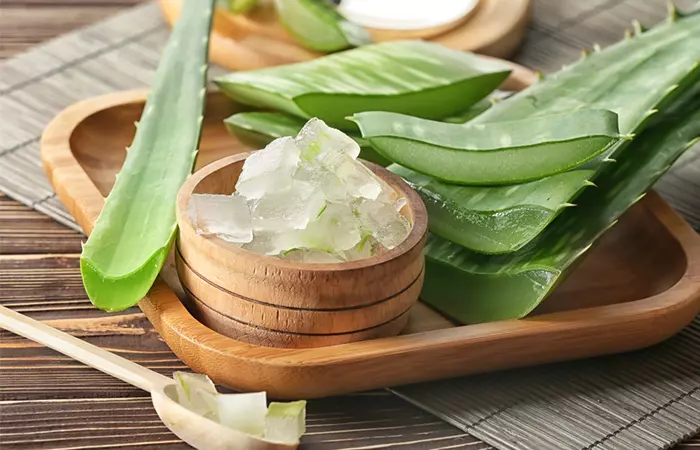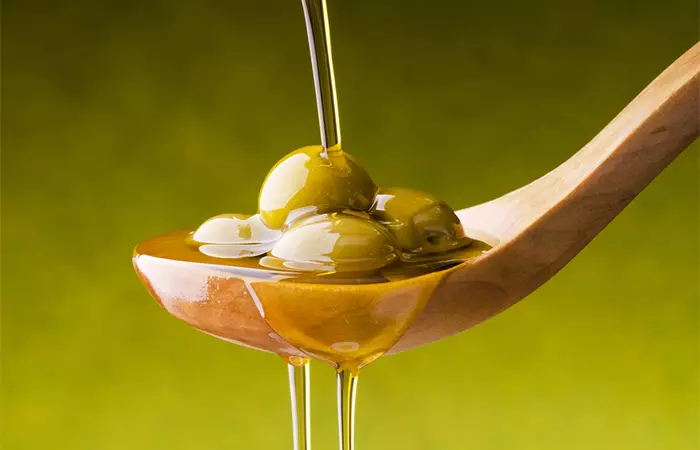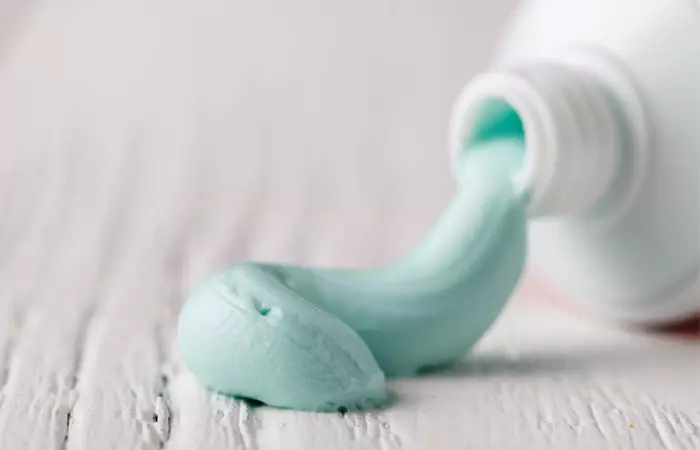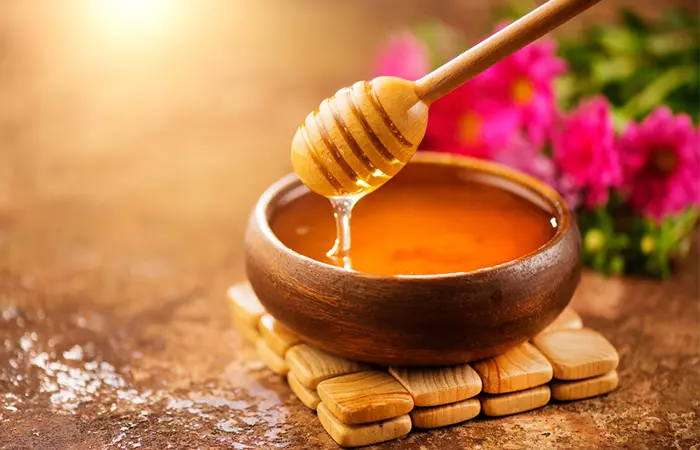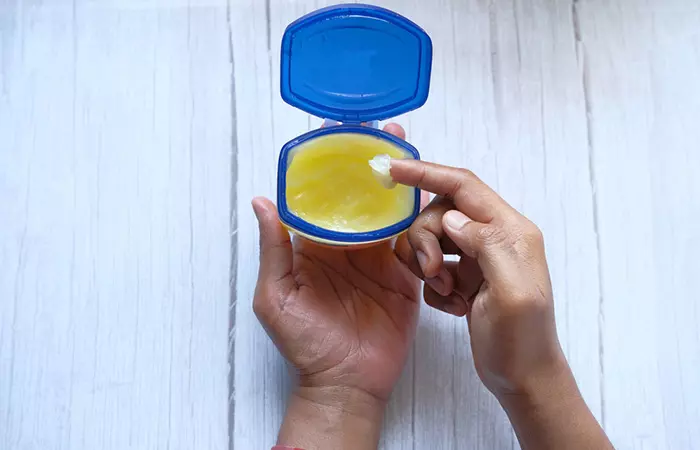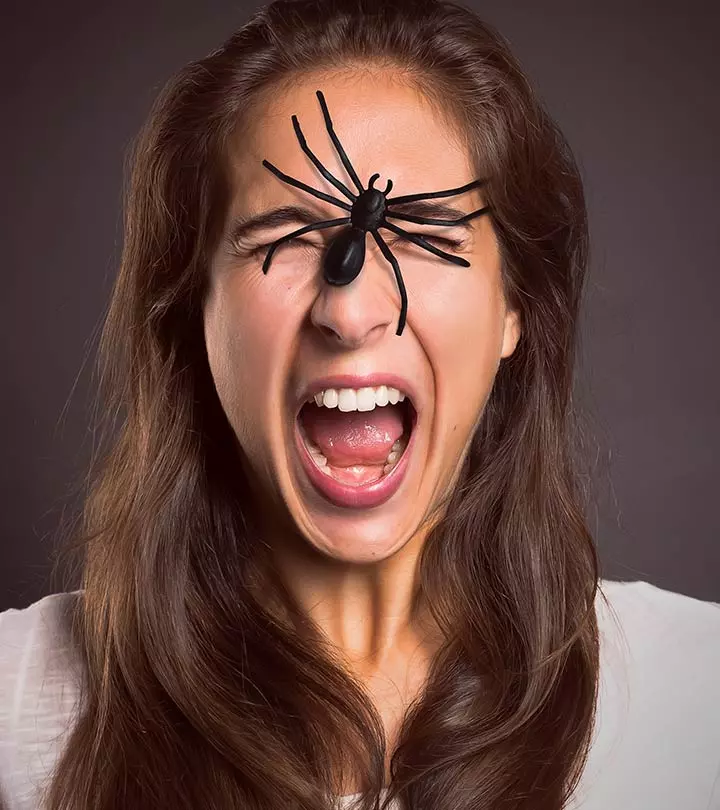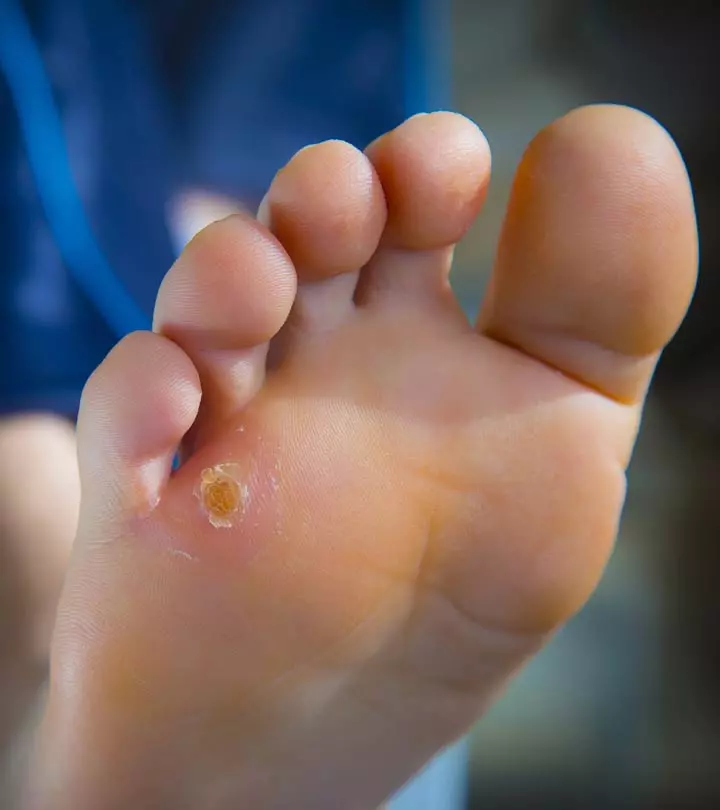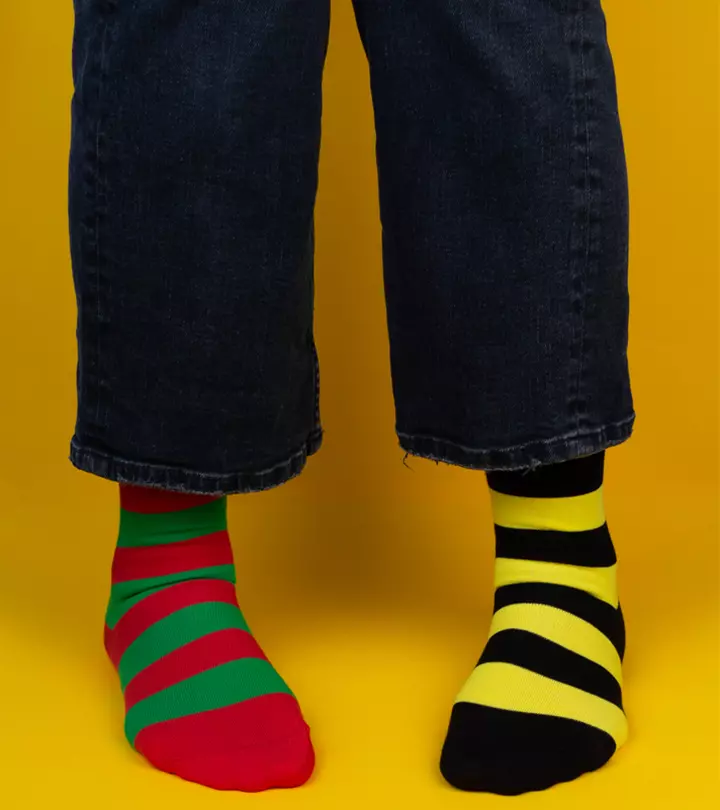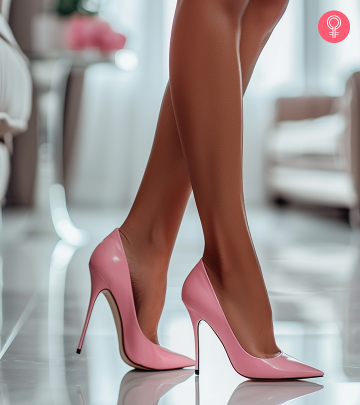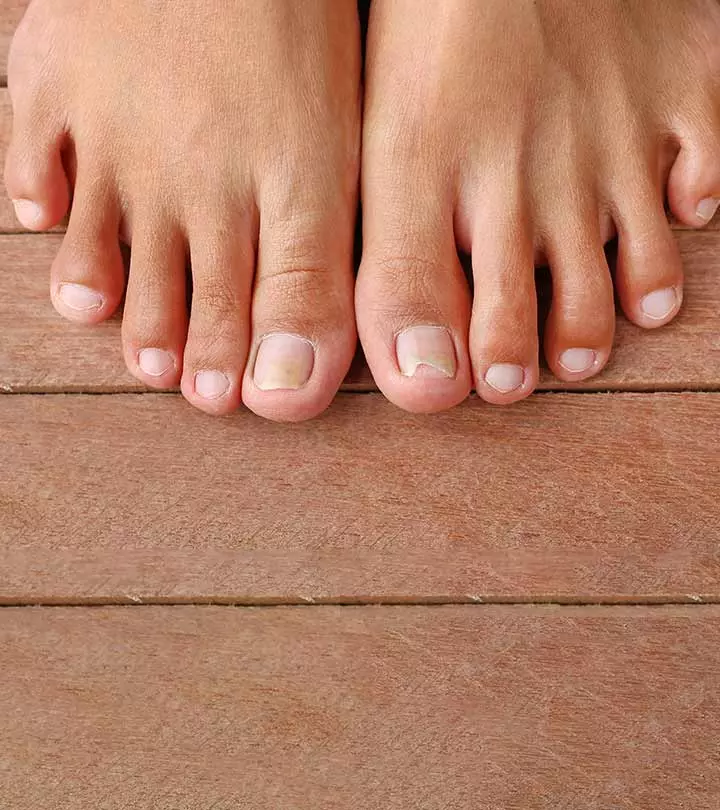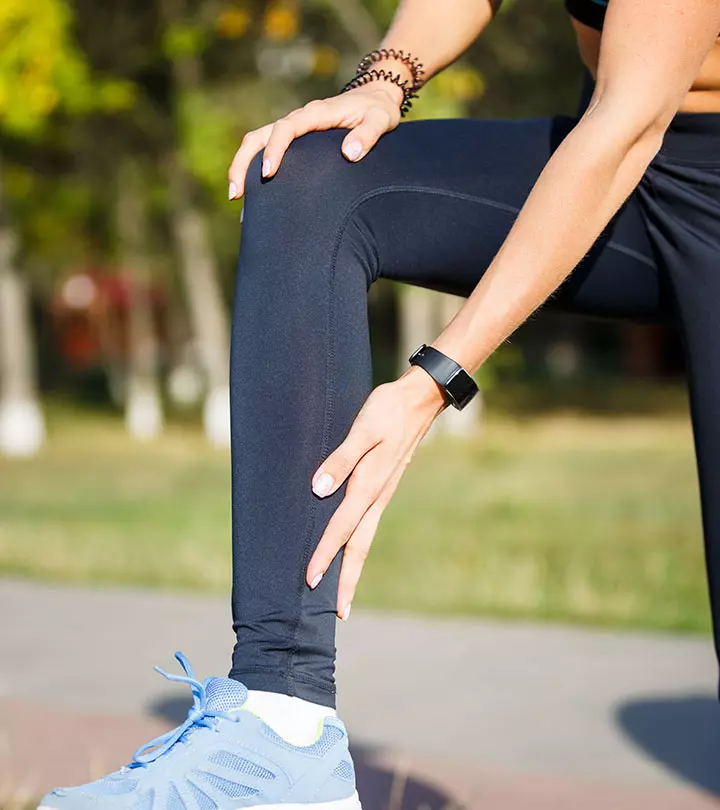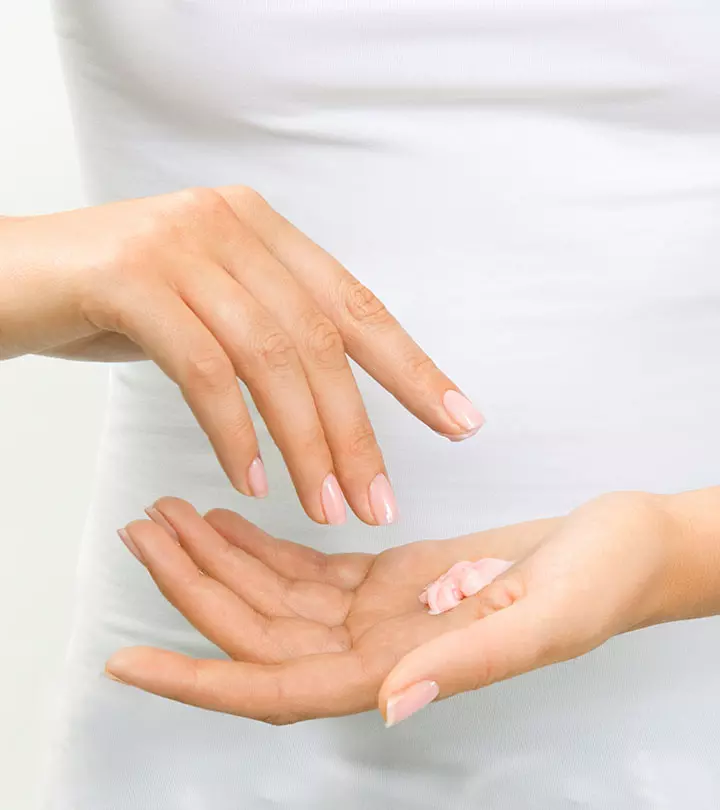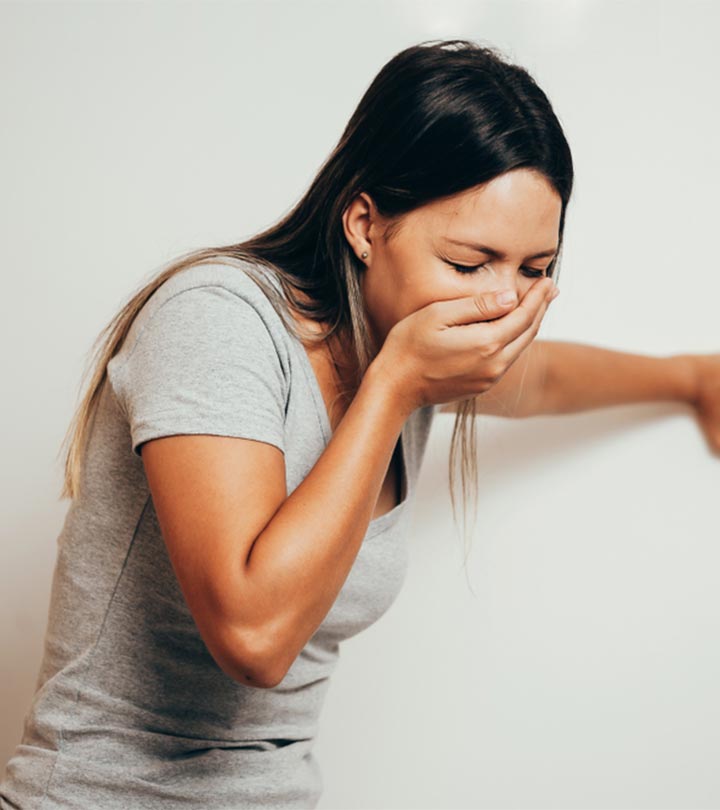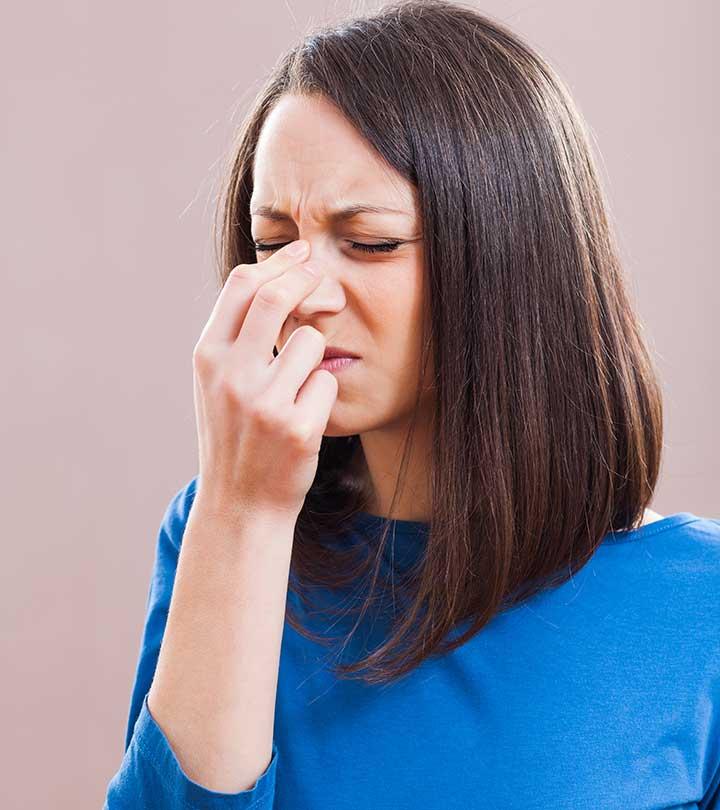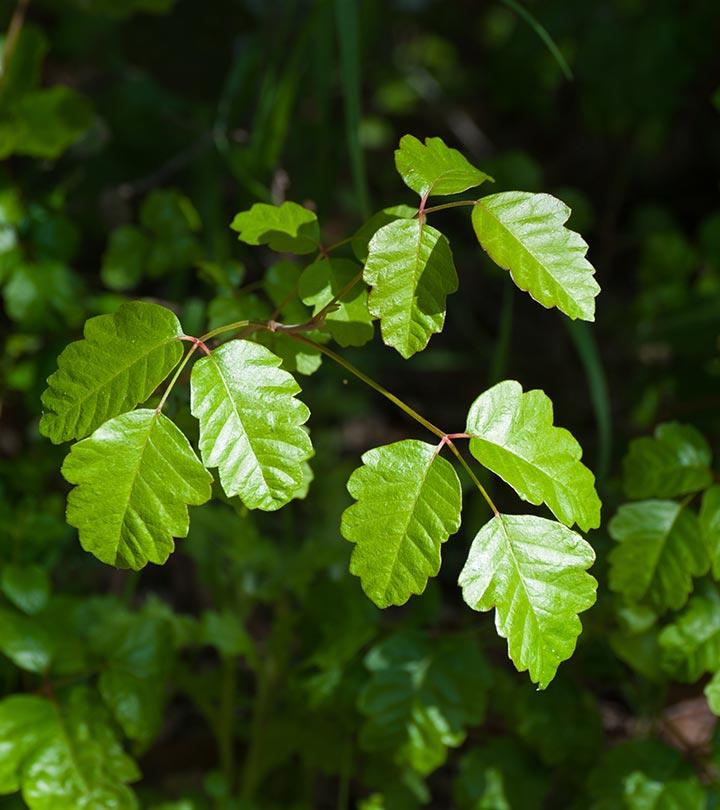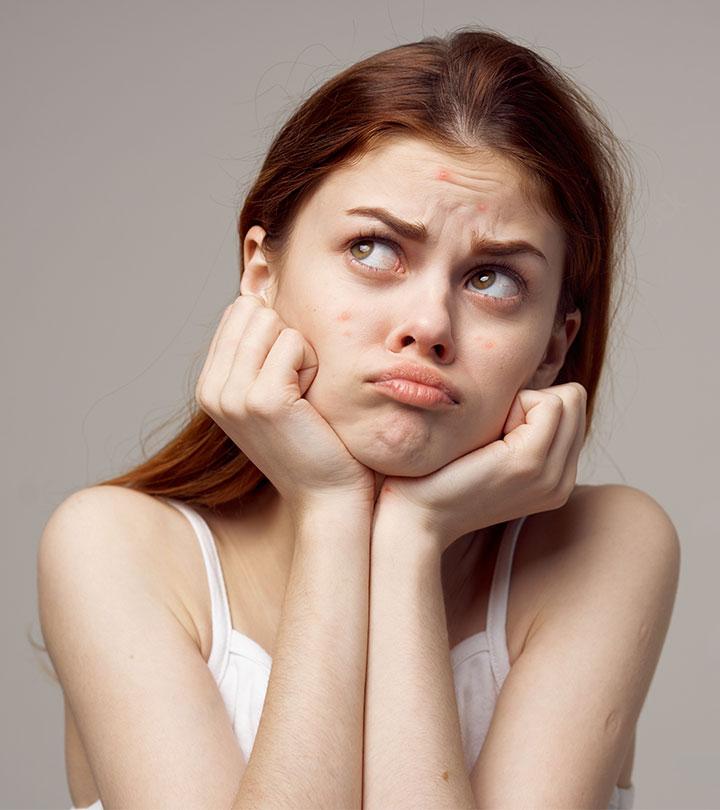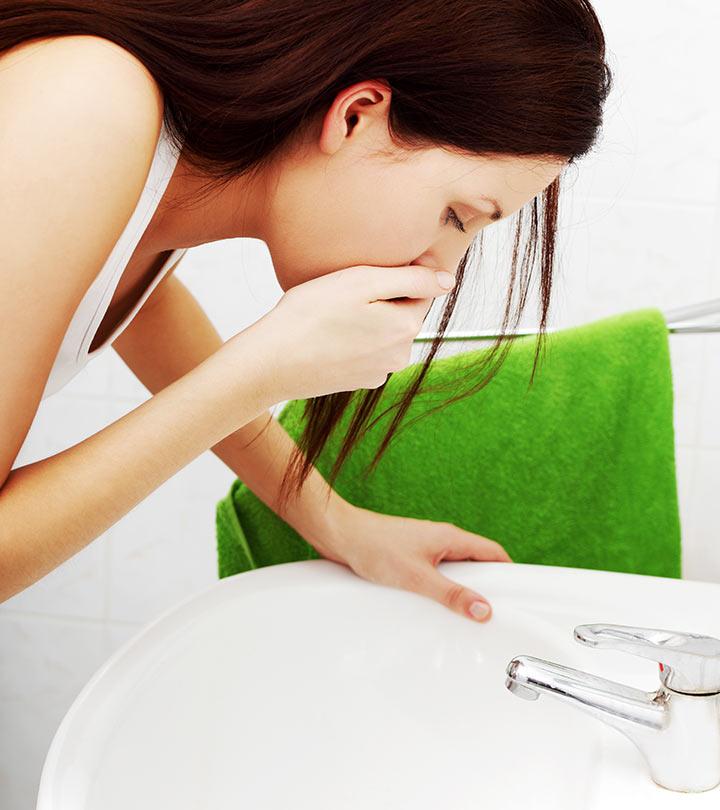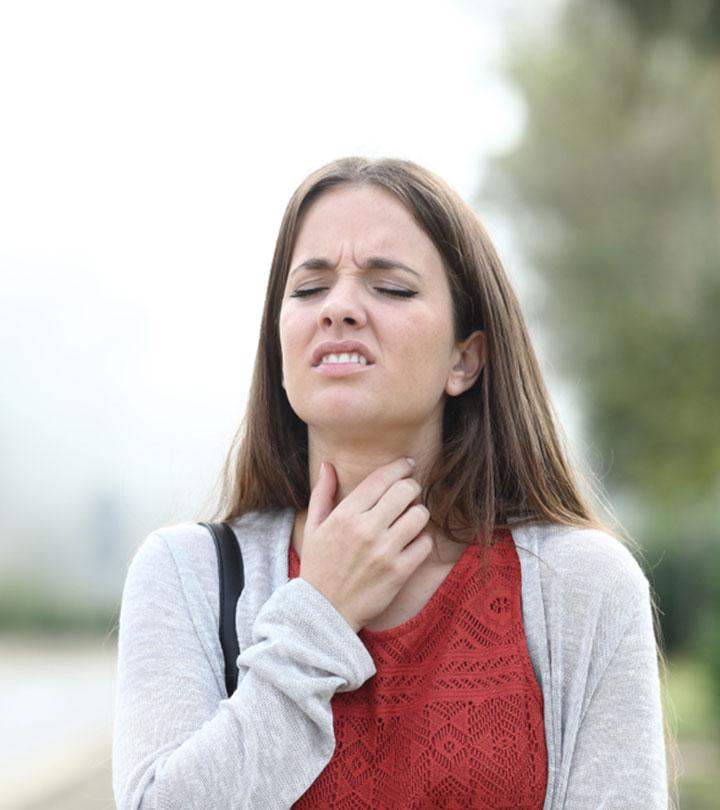How Can I Avoid Shoe Bites?
Walking a mile in your shoes will be a cakewalk with these easy-to-follow tips

Image: Shutterstock
You are excited to try on your new pair of shoes for the first time for a great night out on the town. After a couple of hours, you feel the familiar sensation of pain in your feet, and you know you have got yourself an annoying shoe bite. The good news is that there are a few simple ways to treat shoe bites without throwing away your new shoes! In this article, we explore the various causes and a few simple tips to avoid shoe bites from developing again!
In This Article
What Is A Shoe Bite?
A shoe bite is the wear and tear of skin as a shoe rubs against your feet. This friction leads to blisters and swelling in your feet. It is more common with shoes that are tight or ill-fitting.
Shoe bites can be extremely uncomfortable and also cause pain. They often hurt more when you stand up or walk.
These usually occur behind your ankles or near your toes. They look like rashes or callusesi Thickened and hardened soft tissue that forms on parts of the skin exposed to prolonged rubbing or friction. . Sometimes, these calluses may even be filled with pus.
What Causes Shoe Bites?
Ill-fitting shoes are the primary cause of shoe bites. Generally, people tend to buy shoes without properly considering the dimensions of their feet. This can cause your feet to rub against the shoes. This, in turn, leads to swelling, blisters, and scars on your feet.
Sometimes, the sweat from your feet can also cause the shoes to rub against the skin, causing shoe bites.
Women are more susceptible to shoe bites than men as they tend to wear tight and narrow shoes that can leave blisters and scars on their feet.
 Quick Tip
Quick TipThe first measure you can take towards healing a shoe bite is to avoid wearing the shoes causing it. You can also use certain home remedies to alleviate the pain.
Natural Ways To Treat Shoe Bites At Home
1. Aloe Vera
Several studies have shown that aloe vera possesses anti-inflammatory and healing properties (1). This can help reduce the blisters on your feet. Aloe vera contains glucomannani A water-soluble polysaccharide (made of multiple simple sugars) present in the cell walls of several plant species. , which can help promote faster healing.
You Will Need
½ teaspoon of aloe vera gel
What You Have To Do
- Apply aloe vera gel generously to the affected area.
- Leave it on for a while before you rinse it off with plain water.
How Often Should You Do This
You can repeat this remedy two times a day.
2. Olive Oil
The bioactive compounds in olive oil exhibit anti-inflammatory properties (2). These properties can help reduce the inflammation around the shoe bite.
You Will Need
- 2-3 drops of olive oil
- 1-2 drops of almond oil (as a carrier oil)
What You Have To Do
- Mix two to three drops of olive oil with one to two drops of almond oil.
- Apply it generously to the affected area.
How Often Should You Do This
Repeat this remedy two times a day until the inflammation reduces.
3. Toothpaste
Toothpaste contains menthol, an important component that acts as an analgesici The property of a drug used in surgeries that reduces the pain perception without rendering the user unconscious. and reduces the pain caused by shoe bite (3).
You Will Need
- ½ teaspoon of toothpaste
- A clean cotton pad
What You Have To Do
- Take half a teaspoon of toothpaste on a clean cotton pad.
- Apply this onto the shoe bite and leave it on until it dries.
- Rinse thoroughly with water.
How Often Should You Do This
You can use this remedy one to two times daily.
4. Honey
Honey exhibits anti-inflammatory and antibacterial properties that help reduce the inflammation around the shoe bite. These properties also prevent further infection (4).
You Will Need
- A sterile cotton ball or gauze
- 1 tablespoon of honey
What You Have To Do
- Take a sterile cotton ball and dab it in a tablespoon of honey.
- Place this on the affected site.
How Often Should You Do This
Repeat 3-4 times daily.
5. Coconut Oil And Camphor
Coconut oil exhibits anti-inflammatory and analgesic properties (5). The lauric acid in coconut oil possesses antimicrobial properties (6). Camphor has been used in traditional medicine for its anti-inflammatory properties (7). Together, they can help in alleviating swelling in the affected foot and prevent further infection.
You Will Need
- 1 tablespoon of virgin coconut oil
- 1 teaspoon of camphor
What You Have To Do
- Mix a tablespoon of coconut oil and a teaspoon of camphor.
- Dab a cotton ball with this mixture and apply to the affected area.
How Often Should You Do This
You can do this two times daily.
6. Neem And Turmeric
The active compounds in neem leaves and turmeric (curcumin) can help reduce inflammation and infection. This is due to their anti-inflammatory and antimicrobial properties (8), (9).
You Will Need
- 1 teaspoon of turmeric powder
- A handful of neem leaves
- A few drops of water
What You Have To Do
- Blend all the ingredients to form a thick paste.
- Apply this paste to the shoe bite.
- Leave it on until it dries and rinse off with water.
How Often Should You Do This
Do this two times daily.
7. Petroleum Jelly
Petroleum jelly is moisturizing. It is also known as petrolatumi A mix of mineral oils and waxes that is commonly known as vaseline or petroleum jelly, a popular cosmetic. , and it exhibits antimicrobial properties that promote healing (10).
You Will Need
A tablespoon of petroleum jelly
What You Have To Do
- Apply petroleum jelly to the shoe bite.
- You can cover the area with socks and leave it on overnight.
- You can also apply some jelly onto the sides of your shoes for a few days consecutively to soften the edges.
How Often Should You Do This
You can repeat this until your shoe bite is healed.
8. Tea Bag
Applying black tea extract on the injured skin of laboratory rats was found to speed up the healing process, leading to reduced inflammation and increased collagen production (11). Nevertheless, there is no study confirming black tea’s safety or efficacy for this purpose.
You Will Need
- 1 black tea bag
- 1 cup of hot water
- A clean cloth or paper towel
What You Have To Do
- Steep a black tea bag in hot water for a few minutes.
- Allow the tea bag to cool until it is comfortably warm but not scalding.
- Gently press the tea bag against the affected area for a few minutes.
- Remove the tea bag and let the area air-dry or pat it dry with a clean cloth or paper towel.
How Often Should You Do This
Use this remedy one to two times daily.
 Quick Tip
Quick TipTreating shoe bites is that simple, and these remedies can give you the much-needed relief. But preventing shoe bites is always better, right?
How Can I Prevent Shoe Bites?
As we have already discussed, ill-fitting shoes are the primary cause of shoe bites. Here are a few ways you can prevent a shoe bite:
- Always try the shoes on before purchasing them. This will give you a better idea of how well they fit.
- Rub some oil along the sides of the shoes. Do this for a couple of days before you can wear them. This will help soften the edges and prevent shoe bites.
Venessa, a vlogger whose content revolves about all things shoes, shares several clever hacks to avoid shoe bites when wearing heels. One of the first tips she shares is, “…when you buy the next pair of heels, you want to make sure the area [back of the shoe] is soft and feels comfortable on your feet, so that’s a way to prevent friction. Start off with buying heels that are softer…. Try to invest in leather heels (i).”
- You can use specially designed shoe bite protectors with adhesivei A glue-like material commonly used to attach two or more objects together that can work on various types of surfaces. pads. These pads go inside your shoe and stick where the back of your ankle would be.
- You could also use toe protectors. These are similar to the adhesive shoe protectors but are applied on the front end of your shoes. These can prevent blisters on your toes.
- Wear socks or pads with your shoes to prevent excessive skin abrasion.
Say goodbye to all the worries that tag along when you are out shopping for the perfect shoe!
How do you manage shoe bites? Any tips you would like to share? Post your ideas in the comments box below.
Infographic: 5 Natural Ways To Treat Shoe Bites At Home
The joy of trying a new pair of shoes is often overshadowed by the familiar sensation of pain caused by an annoying shoe bite! Don’t worry. To ensure you enjoy your new kicks to the fullest, we compiled a list of the 5 best ways to relieve shoe bites faster at home. Check out the infographic below to know more. Illustration: StyleCraze Design Team
Tight or ill-fitting shoes can cause friction, and the resultant wear and tear can lead to shoe bites, which are essentially blisters that form on the toes or ankles. Shoe bites are painful and uncomfortable and can worsen unless treated quickly. The first step is to avoid wearing the shoes that caused them and then implement the various ways to get rid of shoe bites. While you can always apply an antiseptic ointment or cream and a bandage over the shoe bite, simple home remedies can also work wonders. Aloe vera gel, neem, turmeric, camphor, honey, petroleum jelly, and castor oil are some of the commonly available ingredients that you can apply to treat shoe bites. A few others include apple cider vinegar, Epsom salt soak, baking soda, cornstarch, aspirin paste or simply a moisturizing lotion. You can also ice the area and then apply tea tree oil, lavender oil or a chamomile tea compress for quick healing. To prevent shoe bites in the future, you may use oil on the sides of new shoes and wear socks, protectors, or adhesive padding.
Frequently Asked Questions
Why do new shoes hurt?
New shoes could hurt if they do not fit you well. Also, the material of new shoes is rather stiff until the shoes are used well. So, to soften the edges, you can apply some oil for a couple of days before wearing them.
Can a particular type of footwear give me shoe bites?
Closed shoes like sneakers, bellies, pumps, or oxfords could cause shoe bites as they could rub against your skin.
Does Vaseline stop shoes from rubbing?
Yes, Vaseline can be a great solution to prevent friction in new shoes. When breaking in new footwear, using Vaseline in common rubbing spots like the back of the heels or side toes may prevent blisters.
How do you break into new shoes fast?
A few simple hacks to break in new shoes to keep in mind are –
• Wear the shoes often to stretch the material of the footwear.
• Put the shoes out in the sun or use a dryer to stretch the shoe fabric.
• Place frozen bags inside the shoes to reduce stiffness.
Which socks prevent blisters?
Since moisture plays a vital role in causing blisters, opt for socks made of materials like Merino wool or fabrics like polyester to prevent blisters.
How long does it take to break into new shoes?
The duration varies from footwear to footwear and depends on factors like shoe material, how often the shoes are worn, etc. It may take an approximate break-in period of 3-4 weeks.
Why do my shoes give me blisters on my heels?
Blisters are caused due to friction between the skin and footwear surface. The most common areas that come under this category are heels, soles, and toes of the feet.
Key Takeaways
- Shoe bites are caused due to Ill-fitting shoes and friction due to sweat on the feet.
- Natural ingredients like aloe vera, coconut oil, and honey boosts faster healing of feet blisters due to their antimicrobial nature.
- Apply a paste of anti-inflammatory ingredients like neem and turmeric on shoe bites to reduce swelling and infection.
- Prevent shoe bites by using toe protectors or applying a layer of petroleum jelly on the sides of your shoes to soften their edges.
Learn how to prevent and treat foot blisters with simple tips and tricks. Check out this video on foot care and keep your feet healthy and happy!
Personal Experience: Source
StyleCraze's articles are interwoven with authentic personal narratives that provide depth and resonance to our content. Below are the sources of the personal accounts referenced in this article.
i. This Is How You Prevent Shoe Bites In Your High Heels! How do I stop my shoes from rubbing my heels?https://www.youtube.com/watch?v=PYFT_TaA5g8
References
Articles on StyleCraze are backed by verified information from peer-reviewed and academic research papers, reputed organizations, research institutions, and medical associations to ensure accuracy and relevance. Read our editorial policy to learn more.
- “ALOE VERA: A SHORT REVIEW” Indian Journal of Dermatology, US National Library of Medicine, National Institutes of Health.
https://www.ncbi.nlm.nih.gov/pmc/articles/PMC2763764/ - Anti-Inflammatory and Skin Barrier Repair Effects of Topical Application of Some Plant Oils, International Journal of Molecular Sciences, US National Library of Medicine, National Institutes of Health.
https://www.ncbi.nlm.nih.gov/pmc/articles/PMC5796020/ - Acute Effect of Topical Menthol on Chronic Pain in Slaughterhouse Workers with Carpal Tunnel Syndrome: Triple-Blind, Randomized Placebo-Controlled Trial, Rehabilitation Research and Practice, US National Library of Medicine, National Institutes of Health.
https://www.ncbi.nlm.nih.gov/pmc/articles/PMC4178917/ - Honey as a Complementary Medicine, Integrative Medicine Insights, US National Library of Medicine, National Institutes of Health.
https://www.ncbi.nlm.nih.gov/pmc/articles/PMC5406168/ - Anti-inflammatory, analgesic, and antipyretic activities of virgin coconut oil. Pharmaceutical Biology, US National Library of Medicine, National Institutes of Health.
https://www.ncbi.nlm.nih.gov/pubmed/20645831 - The Properties of Lauric Acid and Their Significance in Coconut Oil, Journal of the American Oil Chemists’ Society, Springer.
https://link.springer.com/article/10.1007/s11746-014-2562-7 - Camphor ( Cinnamomum camphora ), a traditional remedy with the history of treating several diseases, International Journal of Case Reports and Images, ResearchGate.
https://www.researchgate.net/publication/277662697_Camphor_Cinnamomum_camphora_a_traditional_remedy_with_the_history_of_treating_several_diseases - Curcumin: A Review of Its’ Effects on Human Health, MDPI, US National Library of Medicine, National Institutes of Health.
https://www.ncbi.nlm.nih.gov/pmc/articles/PMC5664031/ - Therapeutics Role of Azadirachta indica (Neem) and Their Active Constituents in Diseases Prevention and Treatment, Evidence-Based Complementary and Alternative Medicine, US National Library of Medicine, National Institutes of Health.
https://www.ncbi.nlm.nih.gov/pmc/articles/PMC4791507/ - 10. Petrolatum: Barrier repair and antimicrobial responses underlying this “inert” moisturizer. The Journal of Allergy and Clinical Immunology, US National Library of Medicine, National Institutes of Health.
https://www.ncbi.nlm.nih.gov/pubmed/26431582 - The Effect of Camellia sinensis on Wound Healing Potential in an Animal Model
https://www.ncbi.nlm.nih.gov/pmc/articles/PMC3705756/
Read full bio of Dr. Jyoti Gupta
Read full bio of Ramona Sinha
Read full bio of Monomita Chakraborty





